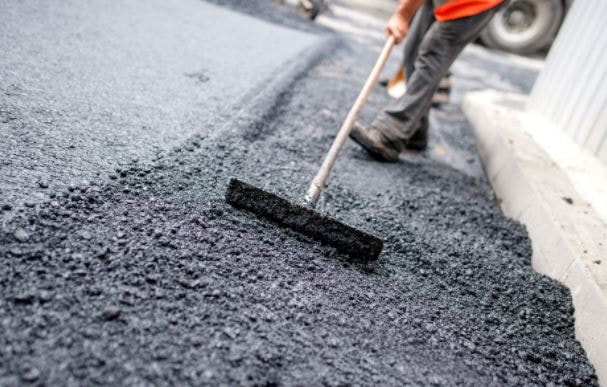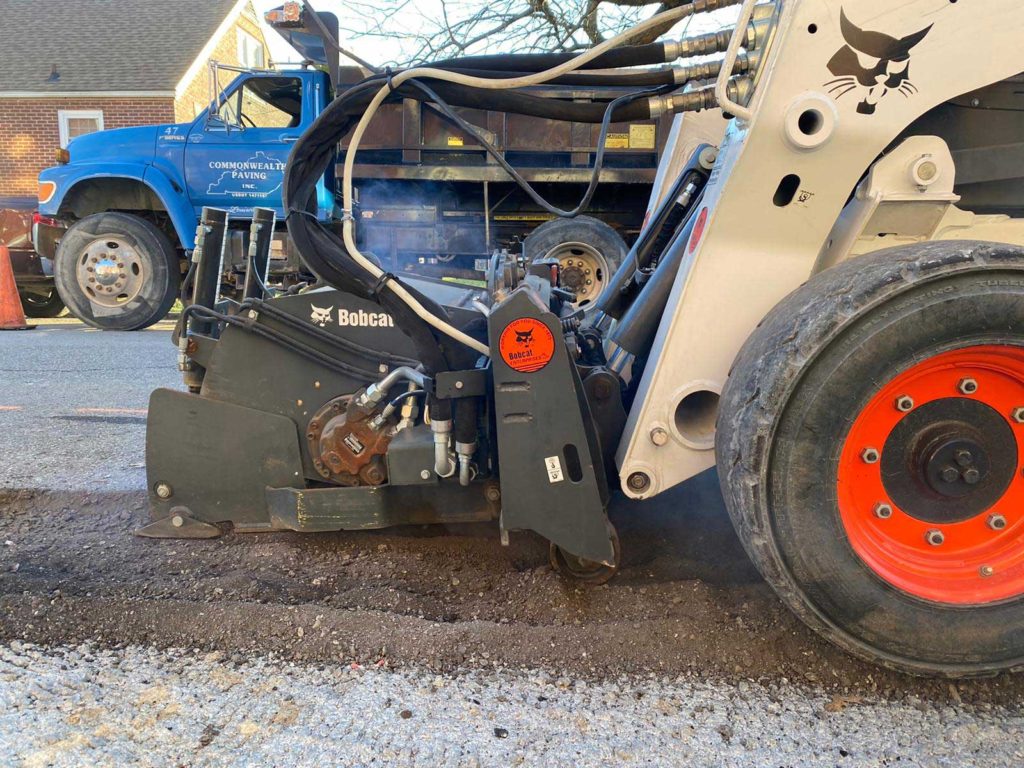Milling
Pavement, asphalt, profiling, and cold milling all mean the same thing. This is the process whereby a section or layer of a paved surface is removed. This removal can just be a section of the surface or the entire depth; something referred to as full depth removal. There are various reasons why one would mill a paved surface; to ensure that the surface is leveled or to repair damages on the pavement, road, or driveway.
This can also change the height and clearances on installations like road shoulders, gutters, sewage structures, overhead passes, and guard rails. That is not all; This is also beneficial in recycling, the removed surface can be reused at the same place or in other construction projects and creating rumble strips. It can also be used to remove wheel tracking in the road (rutting) and sections where bitumen is on the road surface (bleeding). There are various This types; Commonwealth paving will advise you on which type to opt for depending on what you need to be done.
Milling is done using heavy equipment known as a milling machine or a cold planer. This machine has large rotating drums used to grind and remove asphalt surfaces from the pavement. The drum exterior is covered by scrolls of tool holders, holding the carbide cutters in place.
These cutters are positioned so that they enable the pavement to move to the center of the drum after being cut and loaded to a conveyor belt attached to the machine. This machine has water applied to it to reduce excess heat produced by the machine and minimize any airborne dust accumulated by the cold planer during its process.
Fine milling
Fine milling is where special techniques and tools are used to correct the pavement before an asphalt sealant is layered or an overlay is put on the surface. It is so far among the most specialized and complex methods there is. As part of the surface preparation process, it is mainly used to remove old pavement and reconstruct it.
The surface’s slope and height are corrected, and after the surface is cleaned, and the extracted pavement is reused as RAP, Recyclable Asphalt Pavement. Planing is another technique commonly known as pavement milling. It helps expose any hidden curbs and set precise surface gradients and road profiles. Commonwealth paving offers expert teams and good equipment to ensure quality and efficient results in this technique.
Micro milling
Micro milling is a surface treatment technique that is more delicate than fine and pavement. It achieves very accurate and smooth pavement gradients. This technique ensures the longevity of the pavement, helps improve quality, and enhances skid resistance. Finally, there is the bridge overlay removal where the deck is rehabilitated.
this is the process of removing at least a part of the surface of a paved area, such as a road, bridge, or parking lot. this removes anywhere from just enough thickness to level and smooth the surface to the full depth. There are several different reasons for milling a paved area instead of simply repaving over the existing surface.
Recycling of the road surface is one of the main reasons for milling a road surface. Milling is widely used for pavement recycling today, where the pavement is removed and ground up to be used as the aggregate in new pavement. For asphalt surfaces, the product of milling is reclaimed asphalt pavement (RAP), which can be recycled in the asphalt hot mix asphalt (pavement) by combining with new aggregate and asphalt cement (binder) or a recycling agent. This reduces the impact that resurfacing has on the environment.

Milling can also remove distresses from the surface, providing a better driving experience and/or longer roadway life.
Issues that can improve:
- Raveling: aggregate, becoming separated from the binder and loose on the road.
- Bleeding: the binder (asphalt) coming up to the surface of the road.
- Rutting: formation of low spots in the pavement along the travel direction, usually in the wheel path.
- Shoving: a washboard-like effect, transverse to the direction of travel.
- Ride quality: uneven road surface such as swells, bumps, sags, or depressions.
- Damage: resulting from accidents and/or fires


